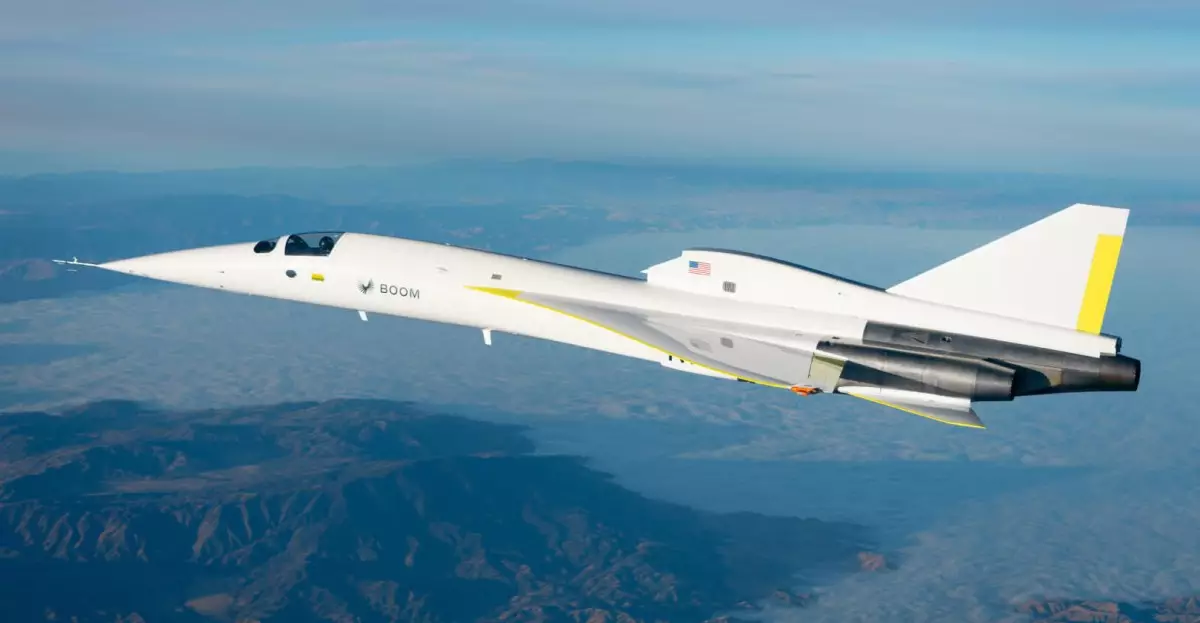In a decisive moment for aviation, Boom Supersonic’s XB-1 prototype has achieved what many once considered an unreachable milestone—breaking the sound barrier for a civil aircraft. This remarkable feat, accomplished during its 12th test flight, marks a significant revival in the quest for commercial supersonic travel, a realm long dominated by the now-retired Concorde. As the aviation landscape shifts, this test flight sheds light on the challenges and promises that accompany the next generation of air travel.
The XB-1, a precursor to Boom’s anticipated larger Overture airliner, has proven its prowess by reaching a top speed of Mach 1.1, equivalent to approximately 844 miles per hour. During the flight, which took place over the Bell X-1 Supersonic Corridor in California, chief test pilot Tristan Brandenburg soared to an impressive altitude of 34,000 feet. What makes this test flight exceptional is not only the speed itself but also the duration—around four minutes of supersonic flight, demonstrating both the aircraft’s capabilities and the advancements made in aerospace engineering.
It’s worth noting that the XB-1, measuring 63 feet in length, is powered by three General Electric J85-15 turbojet engines. However, as Boom Supersonic pivots towards self-sufficiency, the company has announced plans to develop the even more powerful engines required for the Overture airliner after parting ways with Rolls-Royce in 2022. This shift signifies a pivotal moment in the company’s journey toward creating a commercial aircraft capable of carrying 64 passengers at speeds of up to Mach 1.7.
Historical Context and Future Potential
Interestingly, today’s achievement is not merely about speed; it represents a driving force in the evolution of civil aviation. Prior to the XB-1’s test flight, the only civil aircraft to achieve supersonic speeds was the Concorde, which ceased operations in 2003 due to economic and environmental challenges. The return of supersonic travel, powered by innovative technology and renewed interest, has potential ramifications for international air travel, promising shorter flight times and rekindling the excitement of high-speed flight.
Looking ahead, Boom Supersonic has ambitious plans with the Overture aircraft aiming for its first flight by 2030. However, the path to commercial viability is laden with hurdles, including regulatory approvals, environmental concerns, and the ongoing need for rigorous testing. Boom has already demonstrated resilience, having raised over $700 million at this point, and securing agreements to sell 15 supersonic aircraft to United Airlines—with the option for an additional 35—as well as 20 to American Airlines.
While the excitement around the XB-1’s achievements is palpable, there remain significant challenges to address. The landscape of aviation has evolved, and the modern traveler is increasingly concerned about the environmental implications of air travel. Boom Supersonic must navigate these challenges by proving that their supersonic airliners can not only adhere to stringent noise regulations but also minimize their carbon footprint.
In an era where sustainable practices dominate business strategies, Boom must innovate to align its operational framework with eco-conscious advancements. Potential limitations posed by existing sonic boom regulations further complicate this endeavor. Addressing these regulatory barriers will be crucial for the Overture’s market entry post-2030.
The successful supersonic flight of the Boom XB-1 prototype represents a glimmer of hope for aviation enthusiasts and the broader travel industry. As we stand on the brink of a new era in air travel, the visibility of technological ingenuity coupled with rigorous testing will be paramount. If Boom can effectively navigate the intricacies of engineering challenges and regulatory obstacles, we might soon witness a renaissance in supersonic travel, reintroducing the thrill of flight speeds once reserved for the imagination. The final chapters of this story are yet unwritten, but for now, the future looks promisingly fast.

